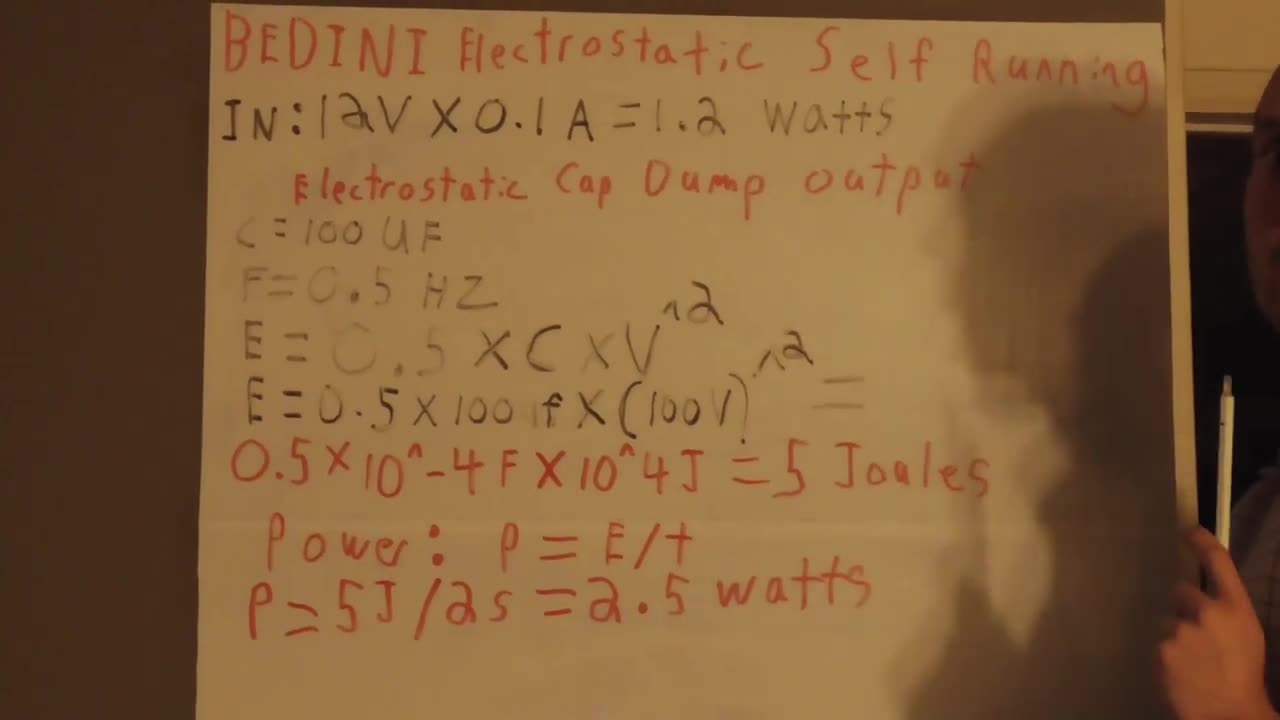Premium Only Content

Bedini Electrostatic Self Running
In this video, we explore the potential of a Bedini motor to power an electrostatic capacitor charging circuit and create a self-looped energy system., it is known for its high efficiency and the ability to increase efficiency with small mechanical loads.
I propose using the Bedini motor to drive the spin of electrostatic plates, which can charge a set of Leyden jars to over 150kV within seconds. Instead By using an SCR and neon trigger to dump the charge of a capacitor into a 12V charging/run battery, we create a self-looped system that takes advantage of the extra electrostatic energy input.
I done the math to calculate the input and output power of this system, based on assumptions of a 100mA input current and a capacitance of 100uF, with a discharge frequency of 0.5Hz. Based on these values, we calculate an input power of 1.2 watts and an output power of 2.5 watts, indicating that the system could potentially produce more output power than input power.
I incorrectly calculated the energy stored in the capacitor as 5 joules, which was an order of magnitude too high. Me bad!!!! So let's do this again :)
If the energy stored in the capacitor is 0.5 J and it is released over a 2 second period, the average power output of the system would be:
P = E / t
P = 0.5 J / 2 s
P = 0.25 watts
So the power output would be 0.25 watts. Less then our input. So in order to get more in output we need to modify the system as follows:
To achieve an output power of 1.3 watts, assuming an input power of 1.2 watts, the power gain needs to be 1.08, which means the output power needs to be 1.08 times the input power.
Using the same formula as before:
P = 0.5 x C x V^2
We can rearrange it to solve for capacitance C:
C = (2P) / V^2
Where P is the desired output power (1.3 watts) and V is the voltage at which the capacitor will discharge (100 volts).
Plugging in these values:
C = (2 x 1.3) / (100)^2 = 0.0000026 Farads, or 2.6 microfarads
So a capacitance of 2.6 microfarads would be sufficient to achieve an output power of 1.3 watts with a voltage of 100 volts. With a cap dump of one second.
Same idea! Sorry about that. I might just delete this video in a little while and update with the corrected version. :)
Forum:
http://typeright.social/forum/
Please Help Support My Research: https://youtu.be/pYXETBB40j0
-
 20:48
20:48
Joel Lagace
5 months ago $0.07 earnedTesla's Secret
163 -

Slightly Offensive
6 hours ago $1.67 earnedDEEP STATE WINS?! Matt Gaetz OUSTED as AG & Russia ESCALATES War | Guest: The Lectern Guy
27K6 -
 LIVE
LIVE
Precision Rifle Network
5 hours agoS3E8 Guns & Grub - the craziness continues
429 watching -
 41:37
41:37
Kimberly Guilfoyle
7 hours agoPresident Trump Making all the Right Moves,Live with Border Union Chief Paul Perez & Lawyer Steve Baric | Ep. 176
115K23 -
 19:38
19:38
Neil McCoy-Ward
10 hours agoMASS LAYOFFS Have Started... (How To Protect Your Income)
13.8K6 -
 46:21
46:21
PMG
22 hours ago"Venezuelan Gang in 16 States, Animal Testing Crackdown, & Trump’s Nominee Battle"
6.97K7 -
 LIVE
LIVE
VOPUSARADIO
9 hours agoPOLITI-SHOCK! WW3!?, BREAKDOWN OF THE WORLD EVENTS & R.A.G.E. (What it means & What's next!)
139 watching -
 1:00:10
1:00:10
The StoneZONE with Roger Stone
6 hours agoWhy Democrats Hold Poor Children Hostage in Failing Schools | The StoneZONE w/ Roger Stone
42.6K5 -
 LIVE
LIVE
Tundra Gaming Live
6 hours ago $0.12 earnedThe Worlds Okayest War Thunder Stream//Air Force Vet Flys Jets
197 watching -
 2:00:54
2:00:54
Redacted News
7 hours agoBREAKING! Putin just SHOCKED the world, launches nuclear capable warheads "NATO can't stop it"
170K501